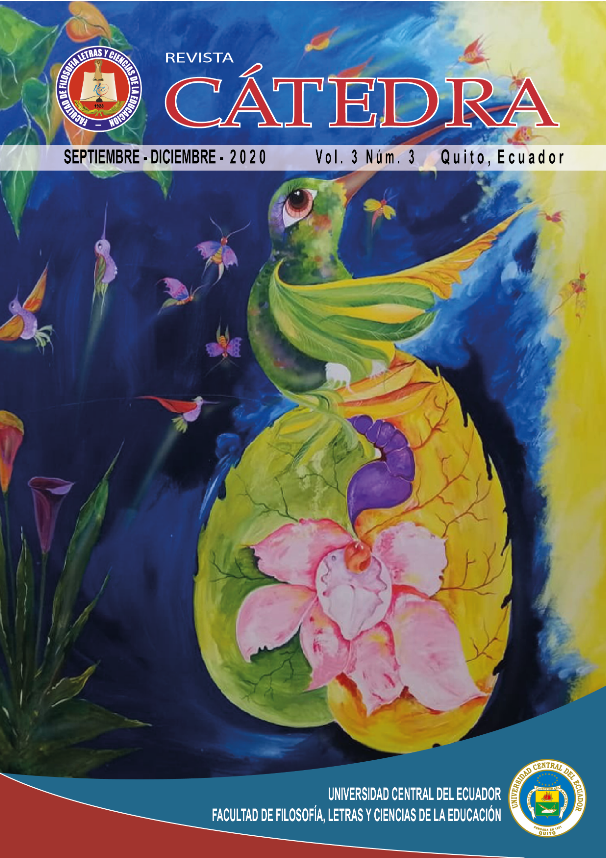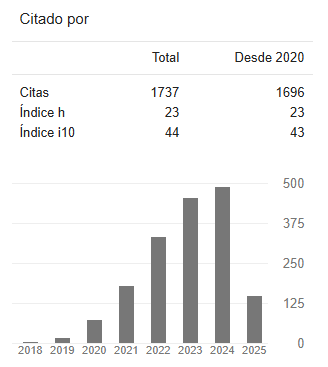La Taptana o contador indígena como estrategia de aprendizaje en operaciones matemáticas básicas
DOI:
https://doi.org/10.29166/catedra.v3i3.2428Palabras clave:
Contador indígena, enseñanza aprendizaje, operaciones básicas, TaptanaResumen
El aprendizaje de la Matemática se manifiesta como un problema que necesita ser observado, estudiado y abordado desde múltiples perspectivas para lograr entender el fenómeno y actuar sobre él. Desde diversas teorías educativas se plantea la utilización de materiales didácticos para promover un nivel óptimo en la comprensión de los procesos matemáticos y la adquisición de los conceptos fundamentales de esta ciencia.
La Taptana o contador indígena hace referencia al acervo cultural prehispánico de los antiguos habitantes del actual territorio del Ecuador. Su origen posiblemente se remonta a la cultura Cañari, fase Tacalzhapa, 500 a.C., (Uhle, 1922, p.108). En los años 80 en el Centro de Investigación para la Educación Indígena (CIEI) se recreó este artefacto de cálculo dando como resultado un material didáctico innovador utilizado especialmente, en lo que hasta hace pocos años atrás se conoció como Sistema de Educación Intercultural Bilingüe.
En el presente estudio se indaga sobre la efectividad de la Taptana, como instrumento matemático para la enseñanza-aprendizaje de las operaciones matemáticas básicas. Se trabajó con estudiantes de dos paralelos, A y B, pertenecientes a Cuarto año de Educación General Básica de la Unidad Educativa José María Velasco Ibarra, institución fiscal situada en el centro norte de la ciudad de Quito. La investigación de corte metodológico cualitativo fue desarrollada en los meses de septiembre, octubre y noviembre de 2019.
Se logró evidenciar la efectividad de la Taptana. Se concluye que la misma mejora la comprensión y el aprendizaje del sistema decimal y de las operaciones matemáticas básicas.
Descargas
Citas
Alburquerque, A., (1953). Metodología da Matemática, Río de Janeiro: Ed. Conquista.
Britton, J. y Bello, I., (1982). Matemáticas Contemporáneas, México, D.F. : HARLA S.A. de CV. p.190.
Butsch, G. Calero, V. Muenala, H., (1998). El contador indígena: (Taptana). Quito, Ministerio
de Educación y Cultura.
Coll, C., (1981). Psicología genética y educación, Barcelona, oikos-tau, s.a. ediciones.
D’Amore, B., (2017). Enseñanza y aprendizaje de las matemáticas: problemas semióticos, epistemológicos y prácticos, Bogotá, Universidad Distrital Francisco José Caldas.
Educación en Ecuador, Resultados de PISA para el Desarrollo, INEVAL, (2018) http://www.evaluacion.gob.ec/wp-content/uploads/downloads/2018/12/CIE_InformeGeneralPISA18_20181123.pdf
López, P. y Fachelli, S., (2015). Metodología de la Investigación Social Cuantitativa, Barcelona, UAB.
More tan one-half of children and Adolescents Are Not Learning Worldwide, Unesco Institute for Statistics. p.7.
Muenala, H., (1989). Quimsa Yupaicamayuc Camu, Quito: Convenio MEC-GTZ-CONAIE.
Rousseau, J., (1985). Emilio o De la educación, Edaf, S.A.
Tercer Estudio Regional Coparativo y Explicativo, TERCE, Unesco, 2013 https://unesdoc.unesco.org/ark:/48223/pf0000227501
Uhle, M., (1922). Sepulturas ricas en oro en la provincia del Azuay, Boletín de la Sociedad Ecuatoriana de Estudios Históricos, 4(12): 108-114, Quito.
UNICEF, 2017. 617 millones de niños y adolescentes no están recibiendo conocimientos mínimos en lectura y matemática.
Valiente, T. y Küper, W. (1998). Pueblos Indígenas y Educación, Quito: Abya-Yala.
Yánez, C. (1996). La educación indígena en el Ecuador, Instituto de Capacitación Municipal: Ecuador, Ediciones de la Universidad Politécnica Salesiana.
Descargas
Publicado
Versiones
- 2021-01-21 (5)
- 2021-01-21 (4)
- 2021-01-07 (3)
- 2020-09-30 (2)
- 2020-09-29 (1)









